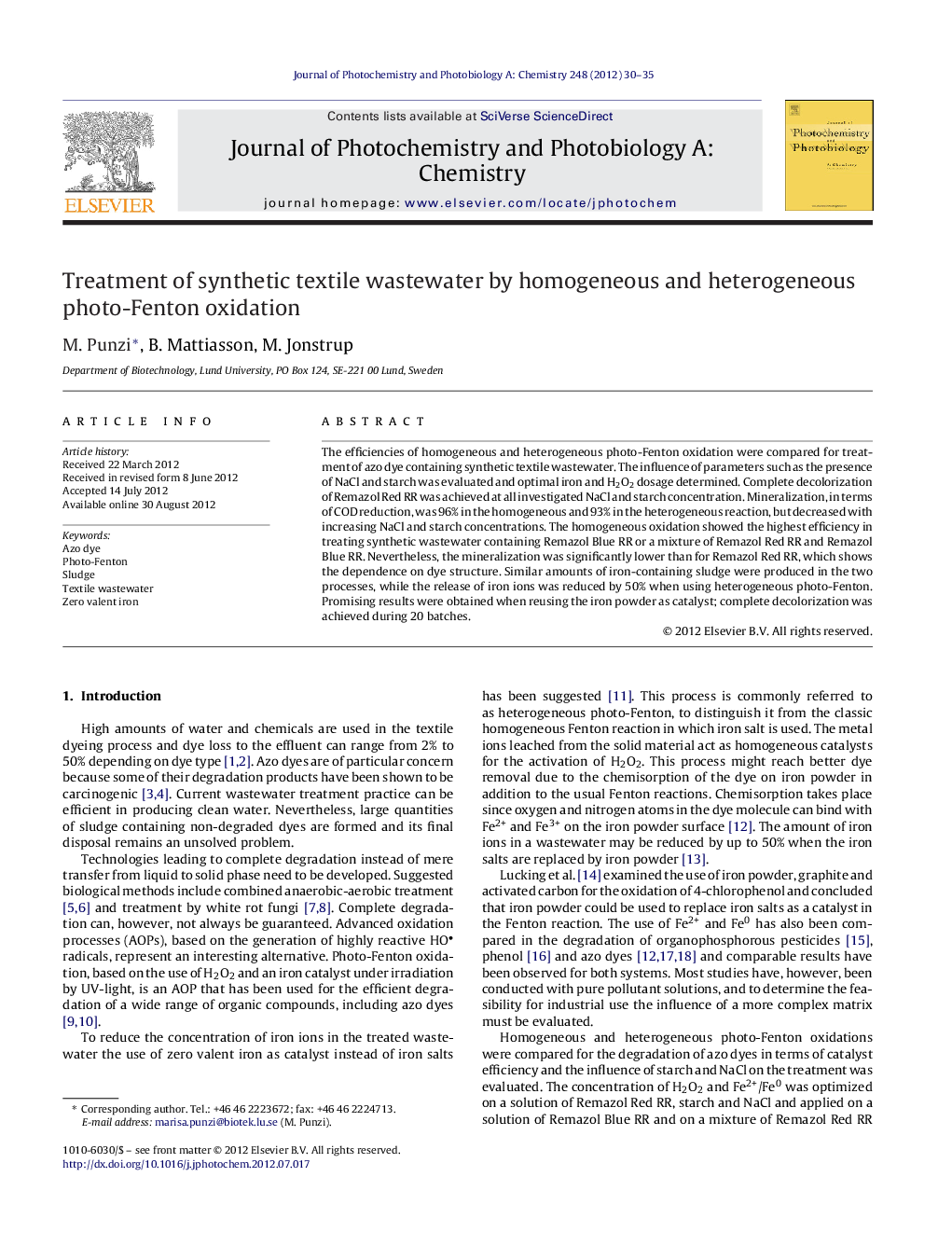| کد مقاله | کد نشریه | سال انتشار | مقاله انگلیسی | نسخه تمام متن |
|---|---|---|---|---|
| 27981 | 44054 | 2012 | 6 صفحه PDF | دانلود رایگان |

The efficiencies of homogeneous and heterogeneous photo-Fenton oxidation were compared for treatment of azo dye containing synthetic textile wastewater. The influence of parameters such as the presence of NaCl and starch was evaluated and optimal iron and H2O2 dosage determined. Complete decolorization of Remazol Red RR was achieved at all investigated NaCl and starch concentration. Mineralization, in terms of COD reduction, was 96% in the homogeneous and 93% in the heterogeneous reaction, but decreased with increasing NaCl and starch concentrations. The homogeneous oxidation showed the highest efficiency in treating synthetic wastewater containing Remazol Blue RR or a mixture of Remazol Red RR and Remazol Blue RR. Nevertheless, the mineralization was significantly lower than for Remazol Red RR, which shows the dependence on dye structure. Similar amounts of iron-containing sludge were produced in the two processes, while the release of iron ions was reduced by 50% when using heterogeneous photo-Fenton. Promising results were obtained when reusing the iron powder as catalyst; complete decolorization was achieved during 20 batches.
► Degradation of the azo dyes Remazol Red RR and Remazol Blue RR using homogeneous and heterogeneous photo-Fenton oxidation.
► Influence of starch and NaCl on COD reduction.
► Heterogeneous photo-Fenton treatment reduced the release of iron ions by 50%.
► Promising results obtained when reusing Fe0 as catalyst during 20 batches.
Journal: Journal of Photochemistry and Photobiology A: Chemistry - Volume 248, 15 November 2012, Pages 30–35